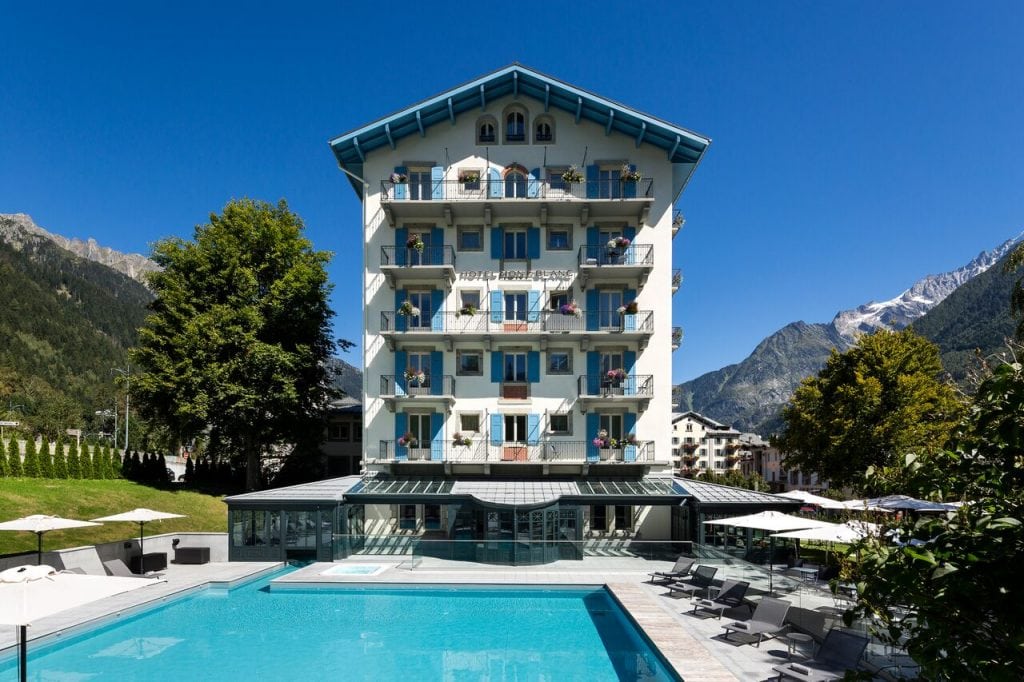When Winter Tourism Getaways Become Summer Attractions

Skift Take

On Experience
Colin Nagy is a marketing strategist and writes on customer-centric experiences and innovation across the luxury sector, hotels, aviation, and beyond. You can read all of his writing here.Summertime travel undoubtedly brings to mind the migration of tourists into the sun and onto sandy beaches. But the mountains in the United States and Europe are also making a strong, bid for tourist spend as they quickly move their economies beyond just the wintertime months to include all four seasons, with a particular surge in summer.
For winter sports enthusiasts, the appeal of the mountains in the off-season is a completely different experience. Hills that formerly housed icy ski slopes are in full bloom with wildflowers. The thinner, higher altitude means that the sun’s heat is tempered, and rivers surge with runoff from the melted snow.
It is a lush, night and day contrast to the wintertime months. Plus, the prices for lodging can be two thirds lower than in the winter, representing value for great hotels. A recent search on travel comparison sites saw a drop of over 65 percent from peak season winter rack rates to summer in a few Alps locations.
But without the respite that the off-season used to provide to communities and to resort owners, overcrowding is a growing concern in some towns.
In the United States, Colorado has seen an estimated jump from 4 to 14 percent for tourism in the summer for the past several years, with record lodging occupancy, and traffic counts.
In Europe, the Alps have also had to contend with environmental strains. A World Wildlife Foundation report cited "large tourist resorts [that] have an area consumption rate that is far greater than that of a non-tourist community."
The former editor of the Aspen Times, Andy Stone, asserted in an op-ed that the growing crush was hurting the environment. There has been a local backlash to more tourism during periods when there used to be more of an offseason.
A quick visit to France's Chamonix in mid-June saw the town in the French Alps heaving with activity; tourism numbers shown town residents in summer have actually surpassed those during the winter. In addition to day-trippers from Geneva, the town was also attracting a decidedly more far-flung and cosmopolitan group. There was an audience from North America, and Europe, and a sizable amount of Japanese and Chinese tourists tucking into the fondue and ambling with trekking poles around cobblestone streets. There was a beautiful contrast of elegant Middle Eastern women in abayas having lunch outside the Hotel Mont Blanc.
Herve Hochet, general manager of the 100-year-old hotel that serves as a central social hub, suggested that the mountains are a nice refuge for those from the Middle East trying to escape the heat of the Gulf region when temperatures and humidity soar.
Chamonix showed no signs of an offseason: A farmer’s market was in full bloom, and there was no closed sign in sight. Even the outdoors shops, likely making most of their margin on rental ski gear, seemed to be happy and functioning with outside sales. The reasons for the attraction were apparent: views, fresh air, lots of open cafes and restaurants, as well as everything from kayaking, paragliding, and long-range hiking to the typical alpine sports such as mountaineering.
While its next-door neighbor, Megève, is known as the Aspen of France with well-heeled millionaires in designer apparel, one gets the impression that Chamonix has much more of an outdoor adventure and mountaineering bent. Sure, there’s a polished Moncler store, but the Arc’teryx (hardcore performance outwear) store gets better foot traffic given the clientele.
And judging by the healthy year-round residents touting well-loved, sometimes hand-stitched gear, there's more concern with making good use of the mountains and surrounding Mont Blanc property than peacocking.
Environmentalism and managing the flow of a year-round resort is also firmly on the radar: Chamonix was featured in a BBC documentary about environmental concerns, highlighting the resort changing its transport infrastructure to focusing on renewable energy. As a result, Chamonix was highlighted as one of four alpine ski stations to be awarded the Flocon Vert, or Green Snowflake, a sustainability prize.
In North America, the four-season mountain trend is also on the rise, with tourists flocking to the usual suspects of Aspen and Vail, Colorado, but also to Banff on Lake Louise in Alberta, Canada; Jackson Hole, Wyoming for hiking and fly fishing; and well as Telluride, Colorado for an American cowboy town experience.
It has been a longtime process to build year-round brands, with towns bringing off-season activities that have grown in momentum year-over-year like Vail's noted culinary events and high-level gatherings like the Aspen Ideas forum that deposits thinkers from the world over into the community for panels and discussions about global issues.
The obligatory quip from many mountain guides and the working residents in these places is, “I came for the skiing and stayed for the summers.” But it seems the summers are taking over.
Kelli McDonald, economic development manager for Vail, recently told the real estate website Curbed that "40,000 people watch the fireworks in July, while Vail’s biggest winter event — the Burton U.S. Open Snowboarding Championships — attracts just 25,000 people."
But the surging investment and activities in the summer have raised awareness of increased environmental concerns that might cause damage to the winter experience. With more tourism activity comes more potential negative activity for the environment. Vail announced last year plans to reduce emissions and waste, and to limit the adverse impact on forests by 2030.
And the nonprofit organization Protect Our Winters is mobilizing outdoor sports enthusiasts to take action against climate change, which threatens every element of mountain living.
This busyness in the mountains in the United States or Europe contributes to energy and economic vitality, with commensurate tax revenues. The challenges, for some surging mountain towns, is indeed pacing the growth and balancing development as the four-season trend develops. And preserving the distinct elements of nature, altitude, and fresh air that make the mountains special.





